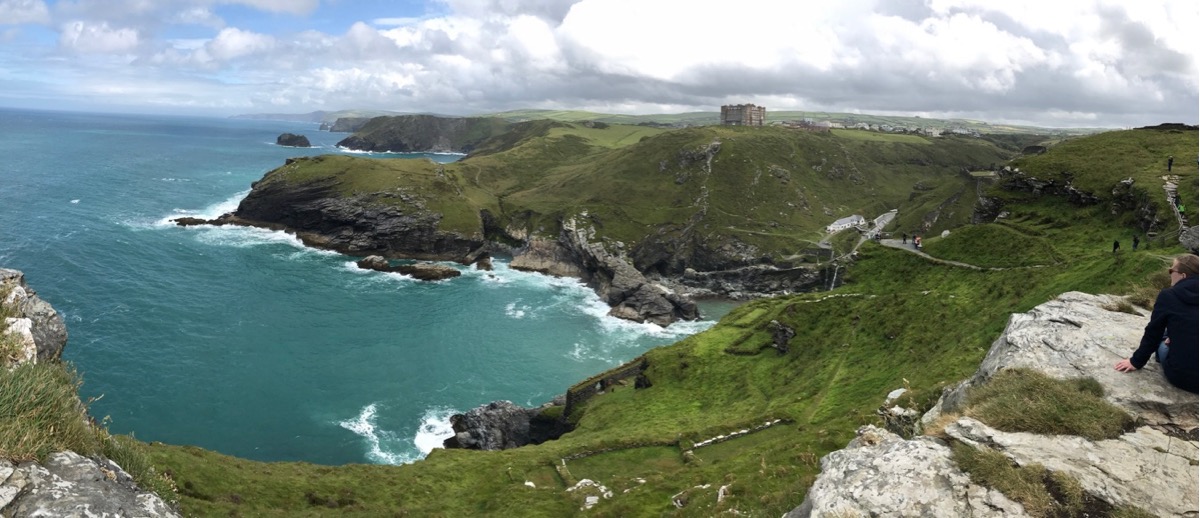 Boscastle Sea Mouth
Boscastle Sea Mouth
All the points in the world couldn’t help us get an upgrade on the flights from Melbourne to London- the front end of the plane was chockers, and cattle class not so much. It was a wonder the plane wasn’t pointing down the entire trip…
But after approx 24 hrs in transit we landed at Heathrow, grabbed a hire car, and drove the 4 hrs to our accommodation in the charming seaside village of Boscastle in Cornwall looking for a good nights sleep.
It was a deep sleep, but not a long one as we were up at 6am working with Rory back in the office by FaceTime and email, tidying up before days end in Melbourne.
After brekkie we headed out to explore Boscastle. It was just a delight and one of the prettiest sites we have seen.
Our accommodation for 3 nights was called ‘The Lugger’, and old pilchard processing space now converted into a very comfy apartment right in the heart of the village on the water.
In just a few steps we were out on the inlet and walked to the sea mouth 3 different ways- to see the village from all angles.
Boscastle is nestled by the inlet in a tight steep valley- there is only room for a handful of cottages along the inlet, and not so many around the village itself.
We also explored the inland forest walk which entered Peter’s Wood!!
Peter Wood in Peter’s Wood..
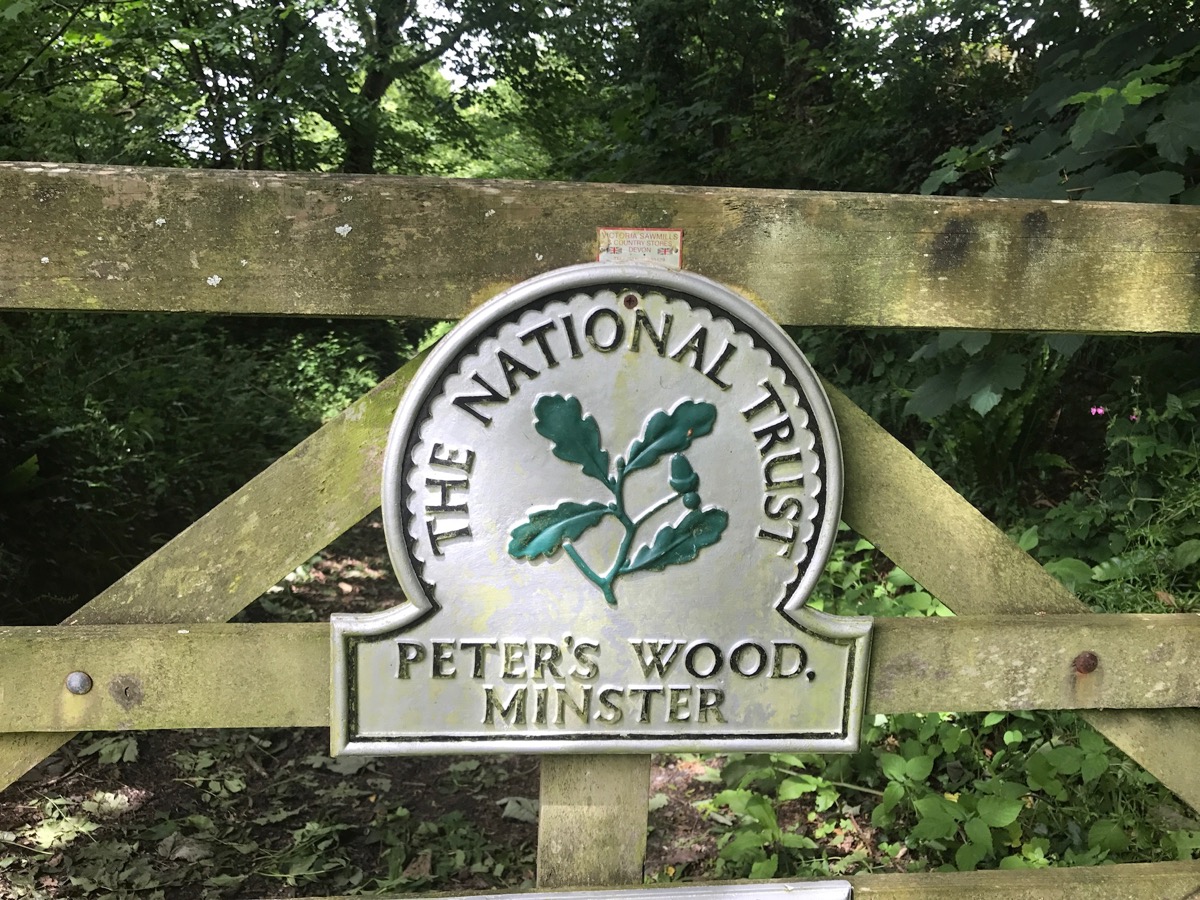 Peter's Wood near Boscastle
Peter's Wood near Boscastle
We had to try the local product so it was Cornish cream tea for our morning tea- it is the Cornish equivalent of a devonshire tea, and comprises scone and jam and cream with a beverage of your choice.
For lunch it was a Cornish pastie- what else?
After lunch we drove a few km down the coast to Tintagel Castle, an important historical site, and the subject of myths regarding it’s connection to the legend of King Arthur. Set on a spectacular rocky promontory a full inspection requires a reasonable level of fitness as there are wooden stairs and rocky steps as the only access to different parts of the property.
Our legs went to jelly but we got some nice pics, and burned off a few calories on the walk back up the hill to town…
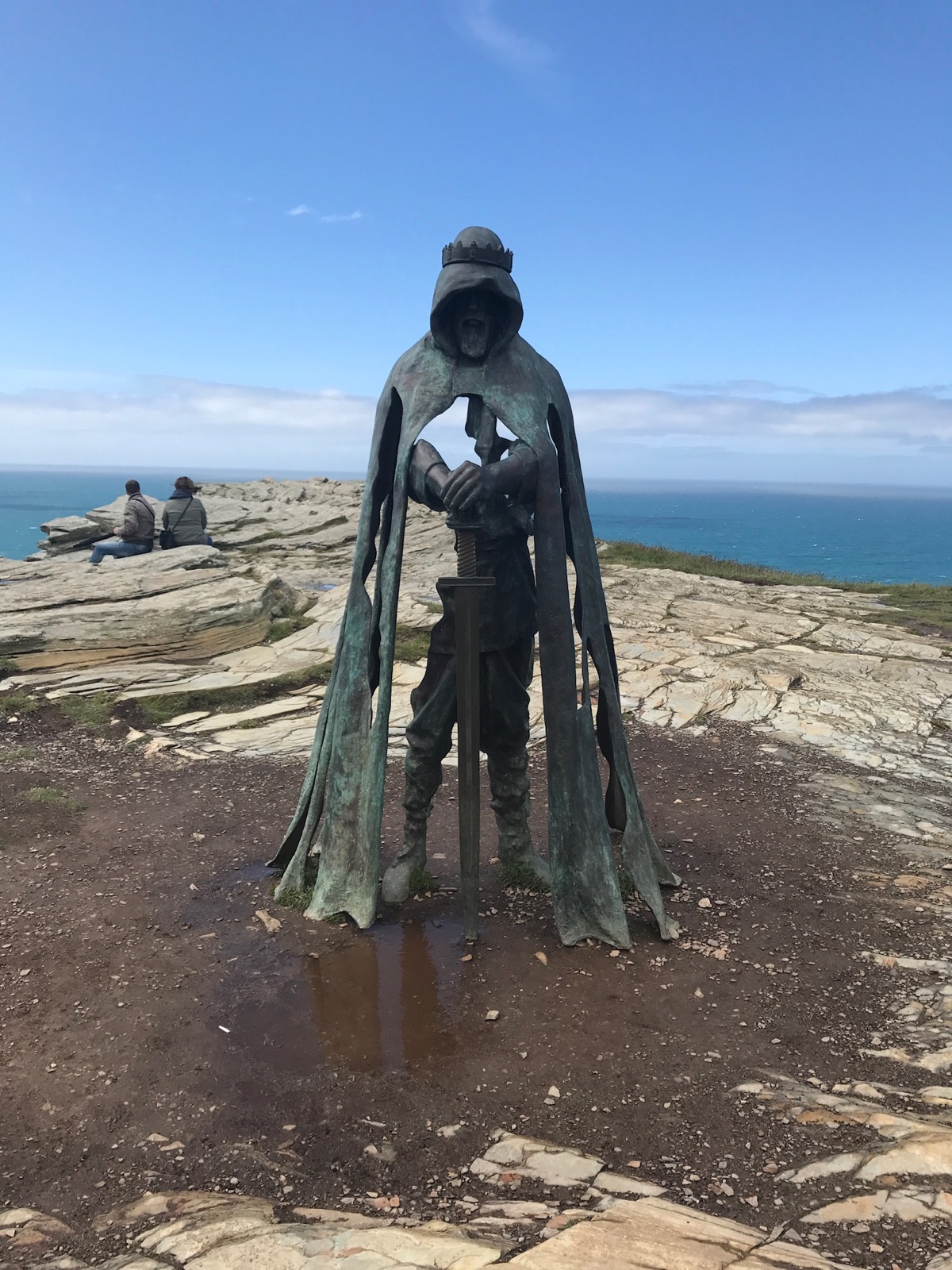 Tintagel Castle Statue
Tintagel Castle Statue
Next was Port Isaac, home to the TV show ‘Doc Martin’. It’s a sweet little town in a gorgeous setting.
We visited the Doc’s place and Mrs Tishell’s pharmacy, and took some pics.
 Port Isaac- Doc Martins place!
Port Isaac- Doc Martins place!
Then we headed off again- this time to our last stop of the day at the town at Port Quin- another cute little port town.
The roads in and out of Port Quin were ridiculous!- one car wide with weeds car high either side, and hedges..
It’s a nervous ride waiting see what is around each blind turn.
The village itself was tiny with only a handful of cottages, which appeared to be owned by The National Trust.
You can stay there or even on the local castle- all organised by the trust.
Its a pretty place, but there is little else there.
We finished our first day in Cornwall at the local pub having a local meal. Yum!
XXXXXXXXXXXXXXXXXXXXXXXXXXXXXXXXXXXXXXXXXXXX
Early to bed, early to rise!
I was up at 5am, and spend some time catching up with emails, and Rory back in Melbourne time.
Once that was done we headed out with ‘Louie’ to get some aerial images of Boscastle.
It was challenging at times in the wind, but we managed to get some nice footage of the town waking up, the inlet, and the fishing boats- all before anyone was around…
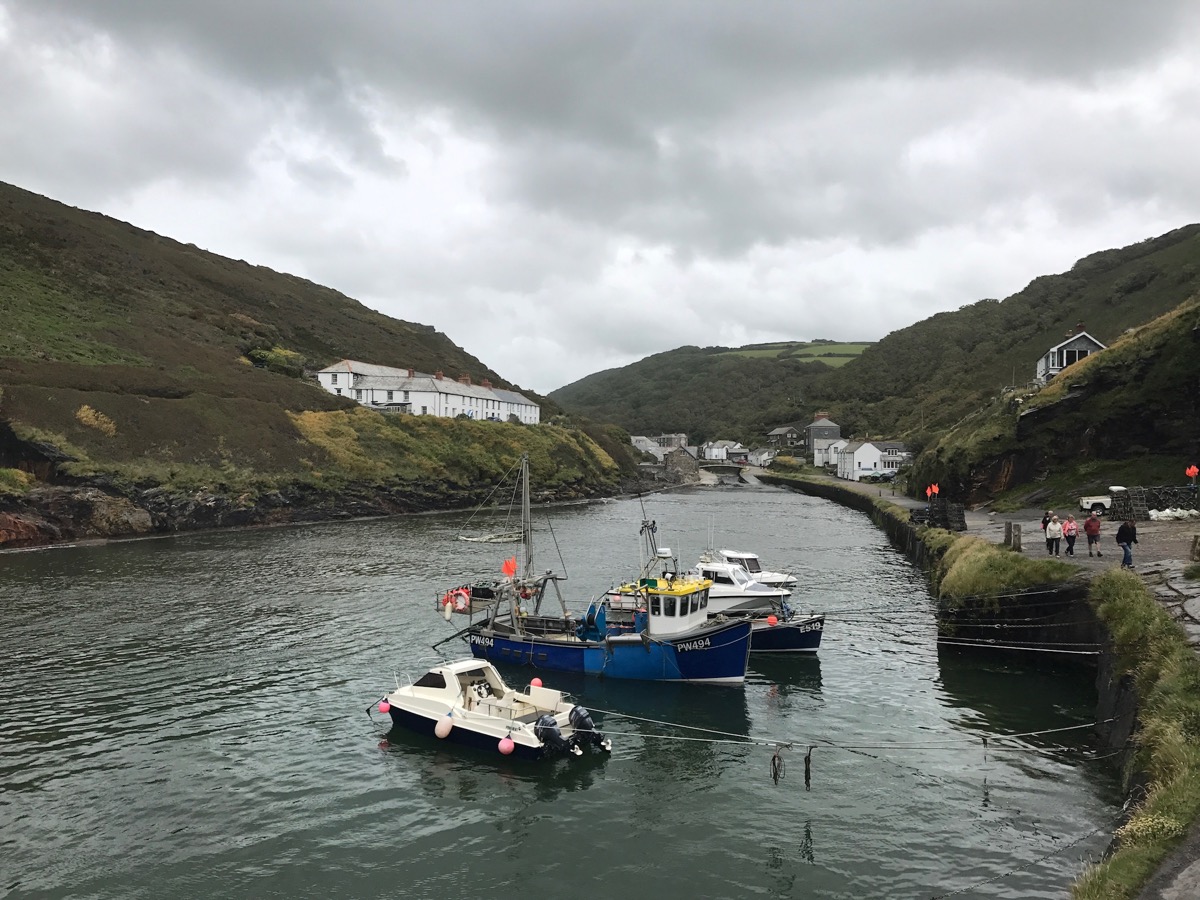 Fishing Boats at Boscastle
Fishing Boats at Boscastle
After a scrumptious brekkie complete with stewed apricots, blueberries, blackberries, strawberries and raspberries on our cereal we headed south in the car for an hour or so to ‘The Lost Gardens of Heligan’.
The story goes that the estate with it’s magnificent gardens fell on hard times when the landscape team all headed of to World War 1, and most never returned.
The gardens quickly became overgrown, and the owner could not cope with ‘the ghosts of his workforce’, and left the area.
His descendants sold off the ancestral home for apartments, and all knowledge of the gardens was forgotten until an heir many years later was working out what to do with the estate he had inherited, and stumbled on part of the overgrown gardens.
‘Heligan’ became one of the largest garden restoration projects ever, with many of the contributors putting time in of their own volition.
We loved it- the different sections of ‘Heligan’ include plantlife from all over the world, and inspired the nearby ‘Eden Project’ where a determined effort is being made to gather and preserve all species of plantlife from all corners of the planet.
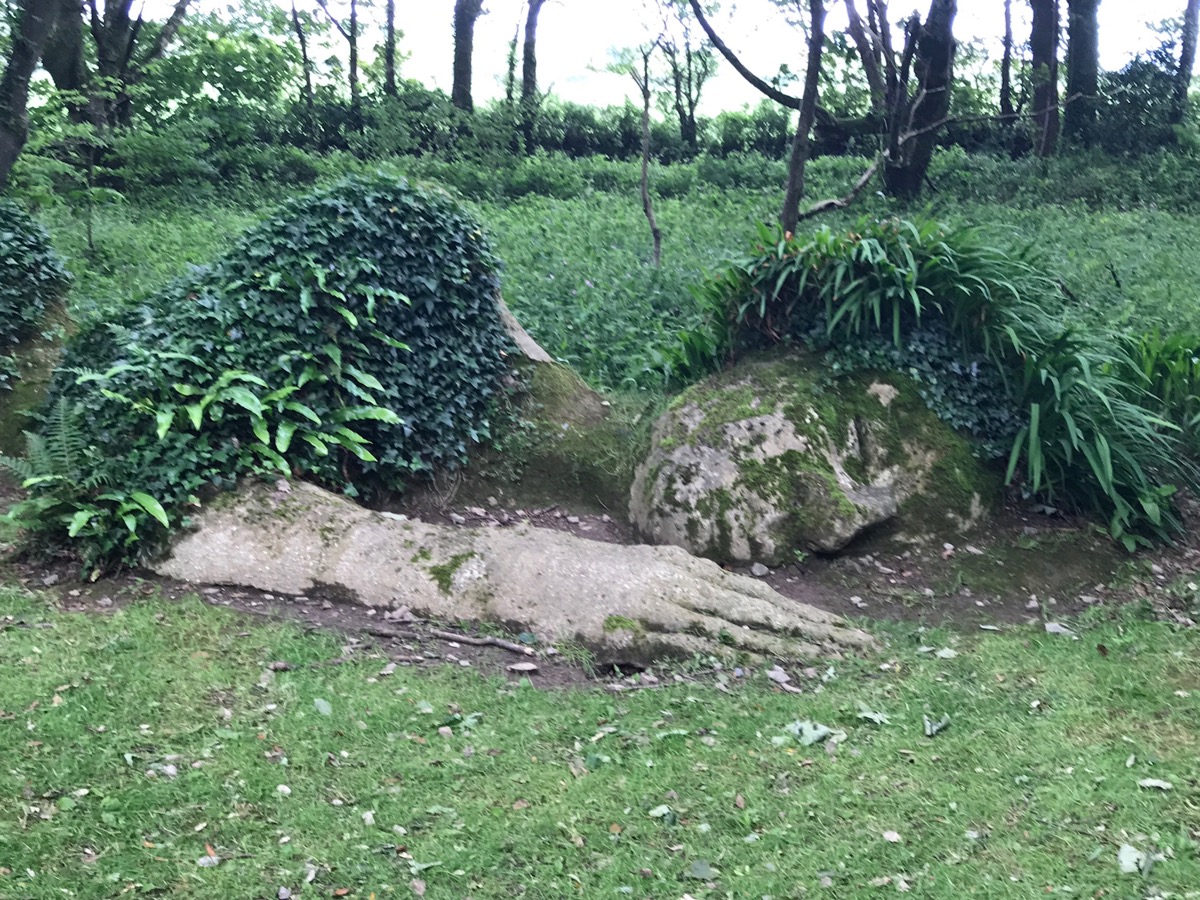 The Lost Gardens of Heligan- sleeping on the job!
The Lost Gardens of Heligan- sleeping on the job!
Next we navigated our way to Lanhydrock- a vast house and garden estate now owned by The National Trust.
The 1000 acre estate has a magnificent palatial home commanding views over a large manicured garden.
Heather felt right at home here!
The estate had a longish history through two different lineages that basically died out.
Descendants of both families just could not marry off the younger generations or produce heirs, so eventually there was no one to inherit and The National Trust stepped in.
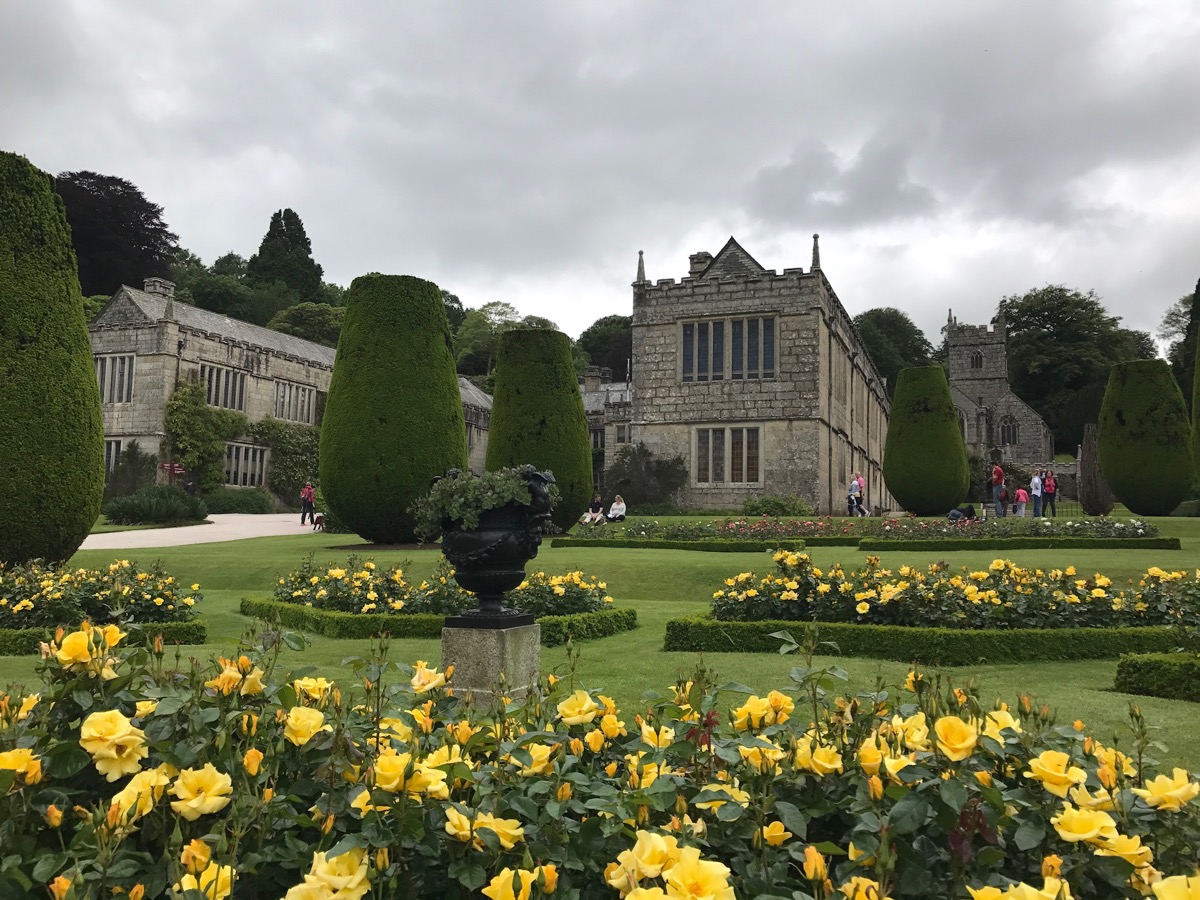 Lanhydrock- palatial house and gardens
Lanhydrock- palatial house and gardens
Mid afternoon back in Boscastle I took the opportunity for a quick nap, and then it was off again- hiking along the oceanside clifftops in the late afternoon. Spectacular!
XXXXXXXXXXXXXXXXXXXXXXXXXXXXX
After another early rise we ventured out into the wind for one last walk on the hills above Boscastle.
Then we said our goodbyes to ‘The Lugger’- our home for the last few days and headed south via a network of hedged lanes until our first stop for the day at Trevose Head. The headland here and the imposing lighthouse have wonderful views south down the coast past the glorious beaches of Trevose, and beyond.
We struck it on a wild windy day, so a saunter around the exposed headland was exhilarating..
Further south we visited “Poldark” territory stopping at Cape Cornwall, Botallack, and Levant Tin & Copper Mines.
Botallack Mine was a particularly dramatic site with the famous Crowns engine houses clinging to the foot of the cliffs on a spectacular piece of coastline.
The mines shafts used to go out deep below the sea, and a cable car was used to send the men down, and the ore back up.
The cable car was powered by the engine in one of the buildings, and the cable winding machine in t’other.
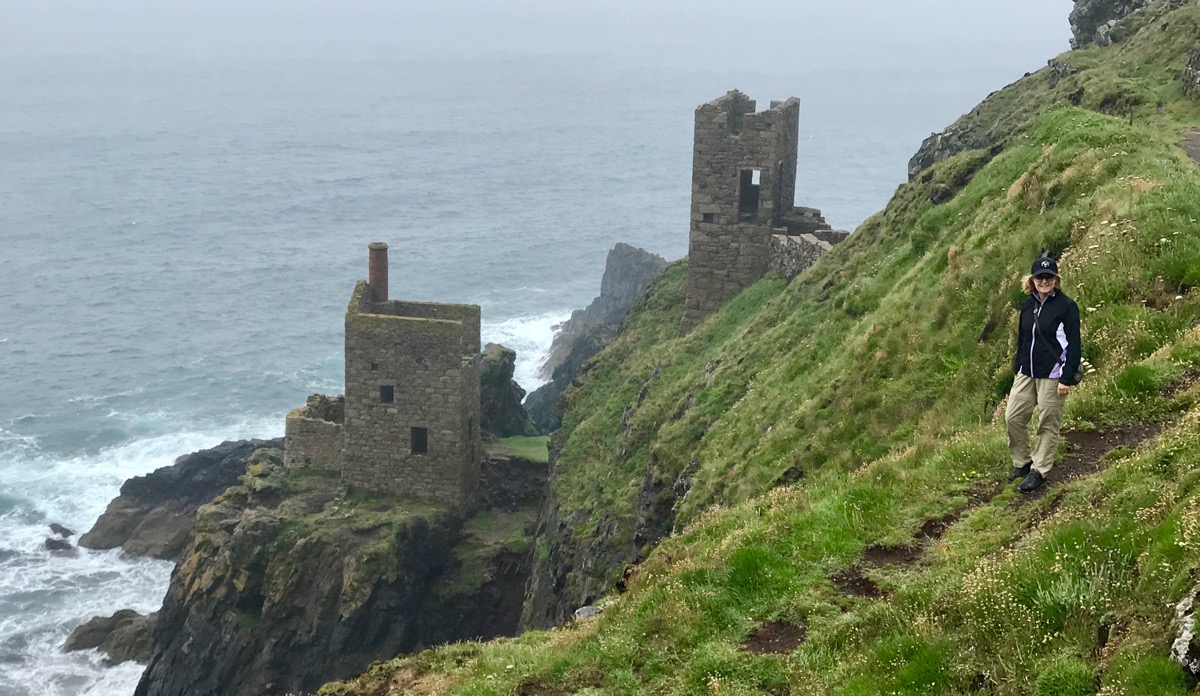 Botallack
Botallack
The weather was bleak- grey sea mists, and light drizzle mixed with fierce gusty winds- but we fell in love with the site.
And I had a little adventure! The lower of the structures was almost inaccessible.
The walking paths were narrow in places, and had some sheer drops to the sea and rocks below so with strong gusty winds it was a little worrisome.
Once negotiated I climbed down the rock wall assisted by steel hooks embedded in the stone.
I took some pics, and climbed right back up again.
Made me feel young!
Next stop was the really ancient estate at Godolphin.
Restoration work here is gradually bringing both the gardens and the house back to their former grandeur- but it is a massive task.
It is a huge Estate and has some beautiful walks, and parts of the inner walled gardens are quite delightful.
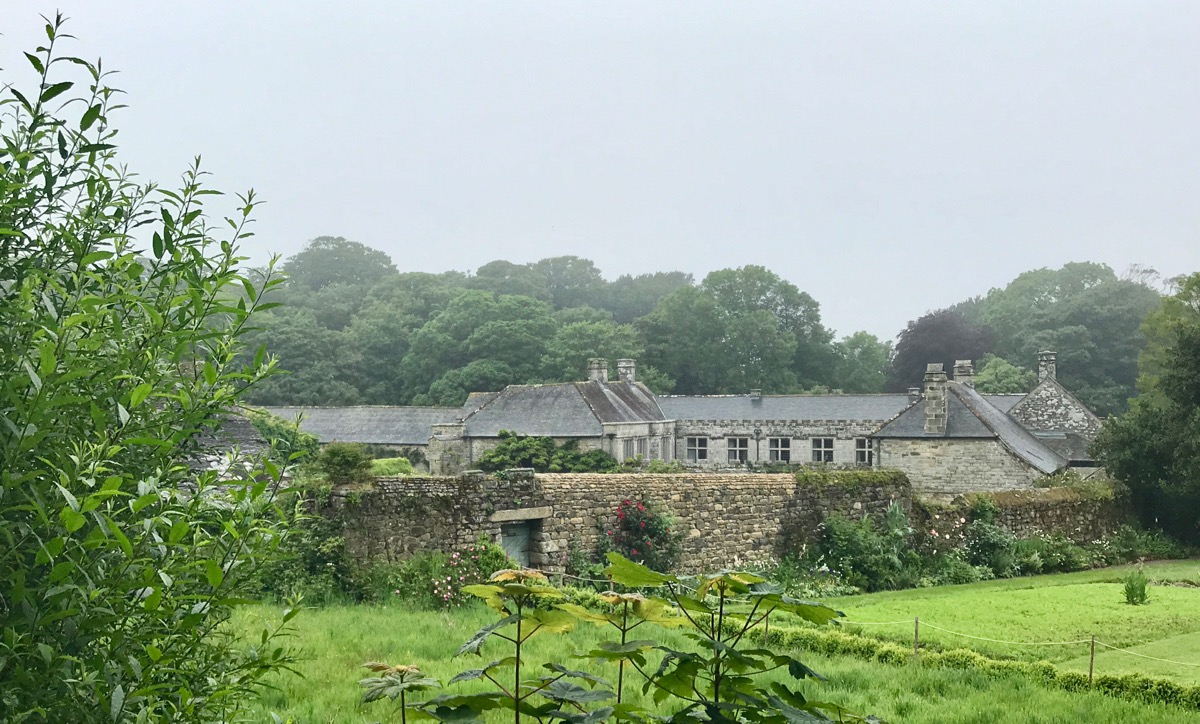 Godolphin Estate
Godolphin Estate
Our bed for the night was the cliff top Mullion Cove Hotel- overlooking some really dramatic Cornish Coastline.
XXXXXXXXXXXXXXXXXXXXXXXXXXXXX
This morning our objective was to explore Mullion Cove before departure mid morning.
Our hotel was sitting high on the headland overlooking the Cove, so we slowly made our way down the steep slope into the cove- another tiny seaport full of character.
Loved it!
We explored the breakwaters, awed by the power of the sea as wave after wave crashed into the rocks sending white spray high in the air…
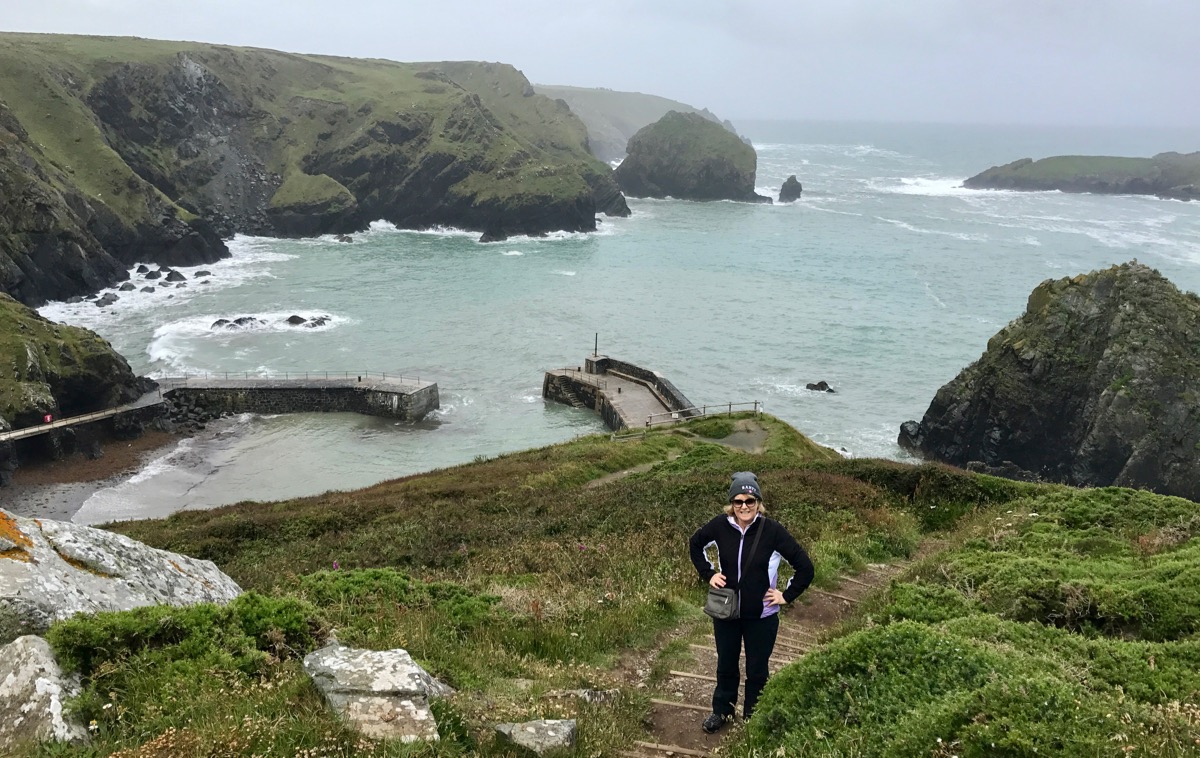 Mullion Cove
Mullion Cove
And of course what goes down, must go up- so we slowly climbed back up to our hotel and prepared for our next adventure.
Further along the coast near Penzance our destination was St Michael’s Mount, an ancient castle dating from the 12th century, located on a tidal island.
Pedestrian traffic can reach the island via a man made causeway, but of course the hours of access are determined by the tide.
It is a very popular destination, and all number of folks were coming and going across the causeway.
The island is home to 35 people and has been under the guardianship of the one family since the 1600’s.
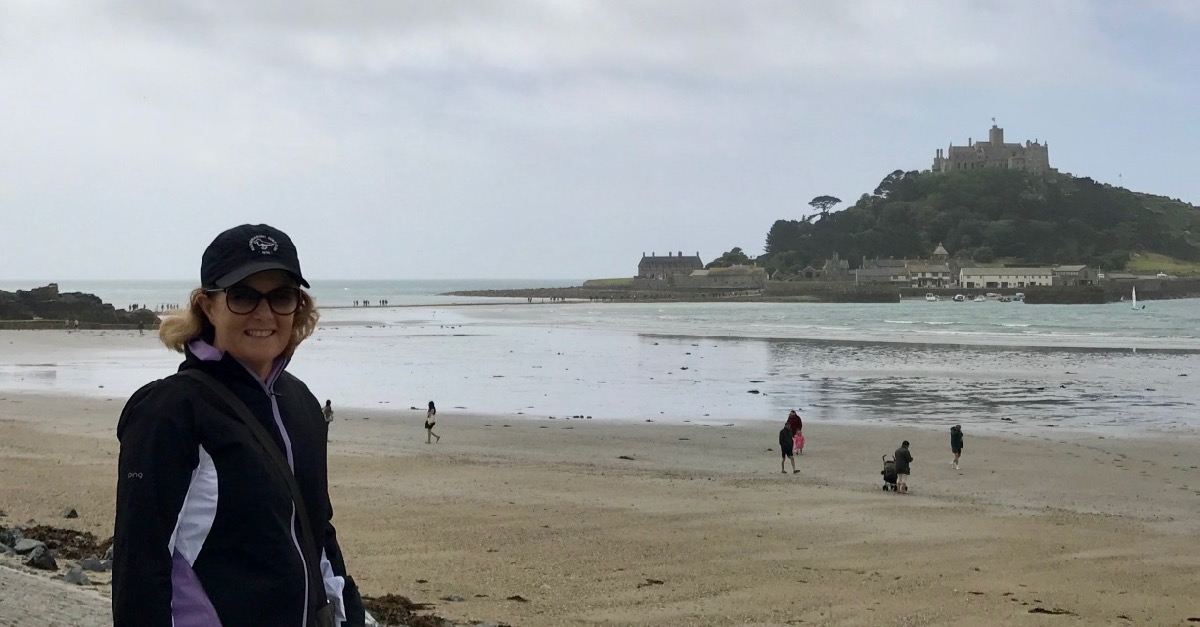 St Michael's Mount
St Michael's Mount
Back on the mainland we fired up the Nissan, and headed north for our first golf assignment of the trip- the famous St Enodoc GC.
St Enodoc is a real links course which dates back to 1888.
It still commands respect, though and as recently as 2014 was ranked among the top 100 courses in the world by Golf Digest.
Located right on the sea in rolling sand dunes, St Enodoc has some famous holes, but none more than the par 4 sixth hole, with a huge dune and bunker to negotiate in the middle of proceedings…
In fact, it's a fantastic hole!
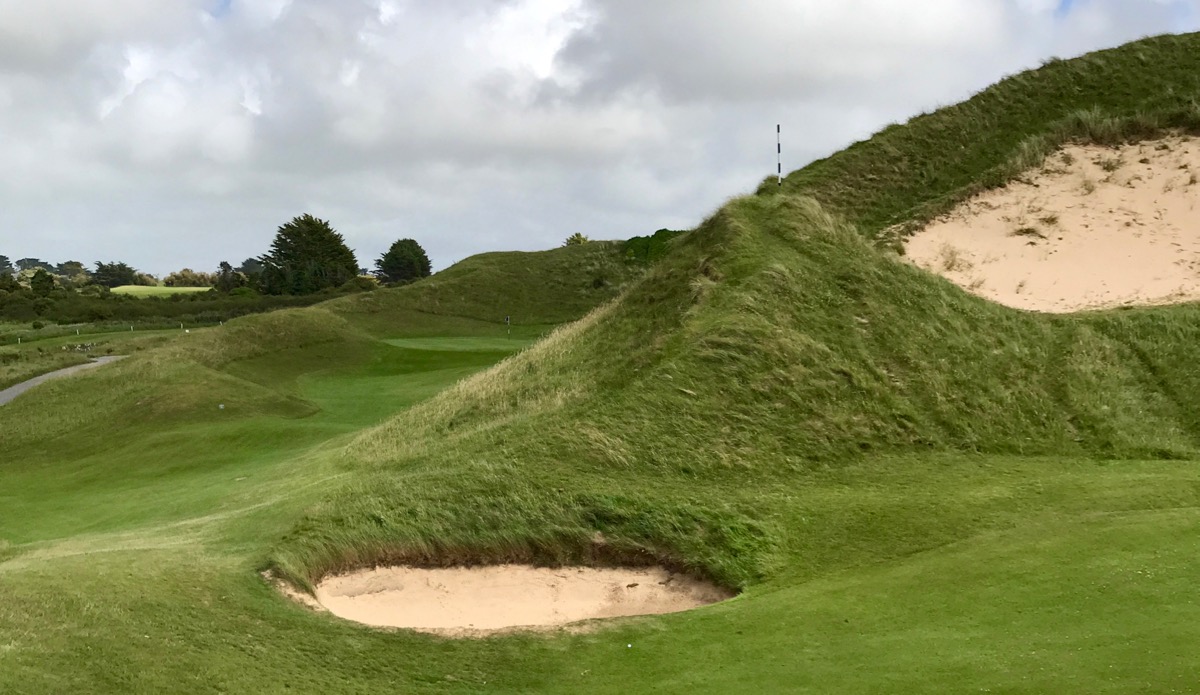 St Enodoc GC- hole 6 approach
St Enodoc GC- hole 6 approach
Our days golf was challenging with strong buffeting winds ensuring we really earned any pars.
After playing we headed back out again with ‘Louie’ to get some aerial footage, which was a challenge given the strength of the winds.
Our lodgings for the night were at The Trevose Golf & Country Club
XXXXXXXXXXXXXXXXXXXXXXXXXXXXXXXX
Today was a day to slow down just a little.
Our task was to play and evaluate the championship course at Trevose Golf & Country Club, which of course was where we were staying.
It was a 30 metre stroll to the first tee.
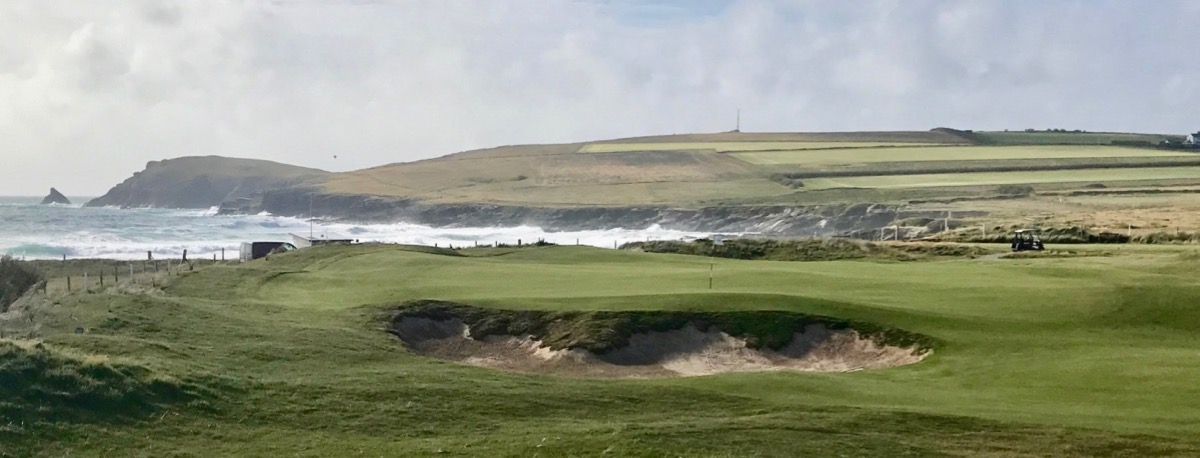 Trevose GC- hole 4 on the sea
Trevose GC- hole 4 on the sea
Trevose was designed by the great Harry Colt and dates from 1925.
It is a true links course built in sand by the sea…
With the Cornish weather improving we had a lovely day on the links, made a few birdies, and finished in under 3 hours.
XXXXXXXXXXXXXXXXXXXXXXXXXXXXXXXXXXXX
As usual work beckoned for the first few hours of the day, but before 9 we were on our way to our first stop of the day at Morwenstow, a secluded spot on the coast which is home to an ancient church, and rectory with a very good cafe.
The cliff's here are spectacular, so with gusto we strode out a loop along the cliffs, and back down a valley to the rectory where we rewarded ourselves with a delicious early lunch.
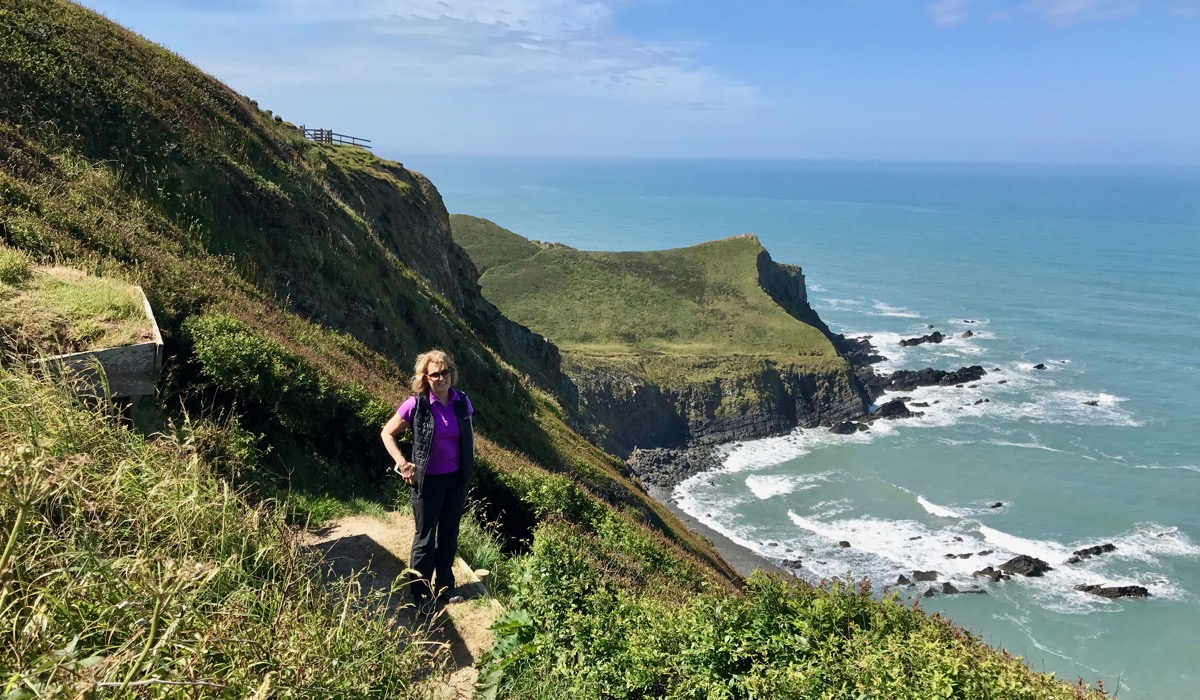 Morgenstow Hawkers hut views
Morgenstow Hawkers hut views
Next stop was the quaint seaside village of Clovelly, built in a very steep site overlooking a small port.
The entire village is privately owned and has been controlled by only 3 families for the last 800 years.
It is a popular tourist destination.
It is also a picturesque spot, but the cobblestone streets of the village are very steep and cars are off limits.
It makes for a quite demanding walk down into the town and back up.
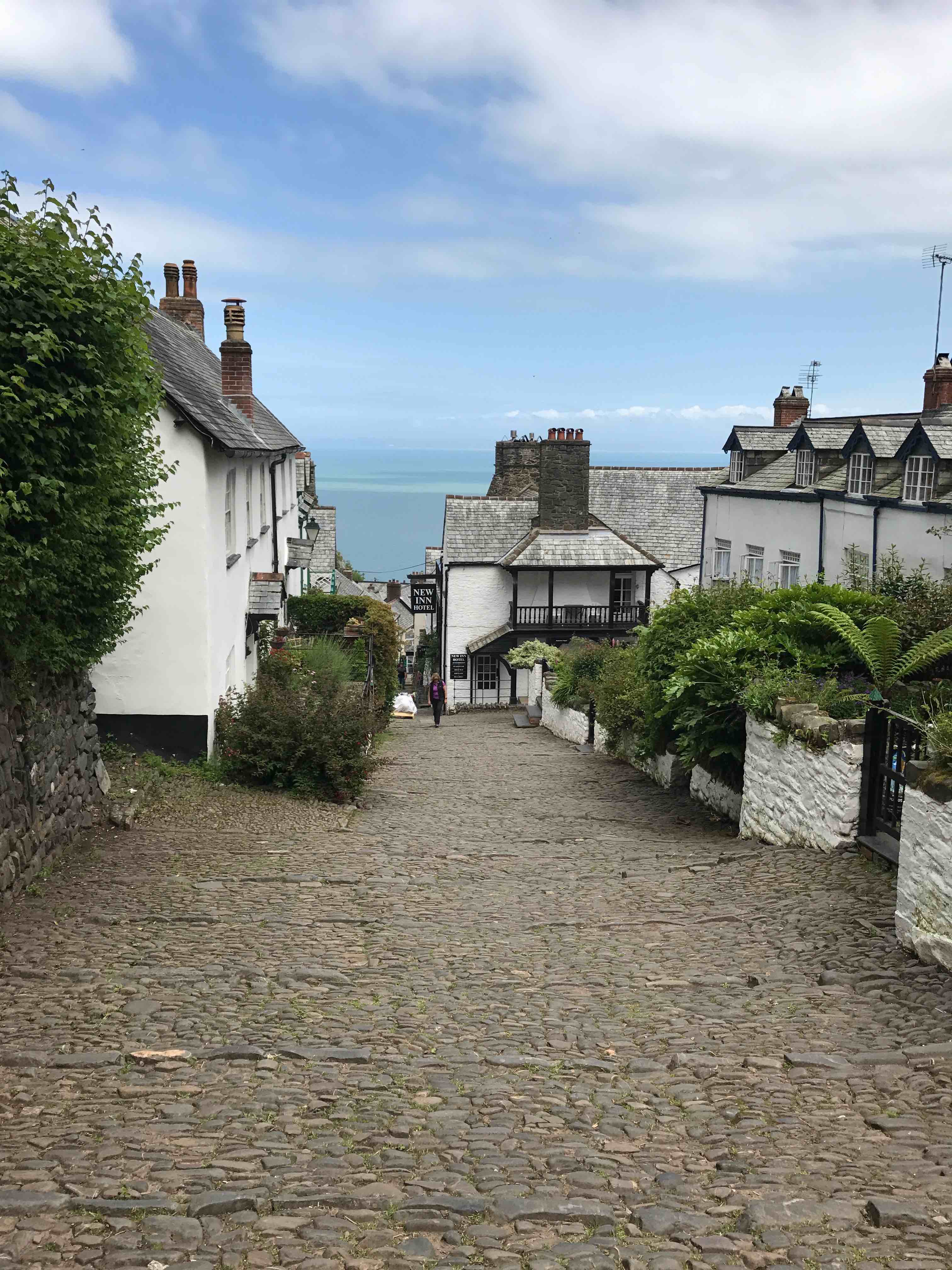 Clovelly
Clovelly
Our final stop was much anticipated.
We visited Royal North Devon Golf Club, the oldest golf course in England, and a perennial favourite.
The manager Mark greeted us warmly and gave us a tour of the clubhouse where it’s long history was proudly on display.
We were fortunate to have a glorious summer day and really enjoyed the course.
The famous 4th hole with it’s boarded bunkers was a thrill to play…
It's a fantastic golf hole!
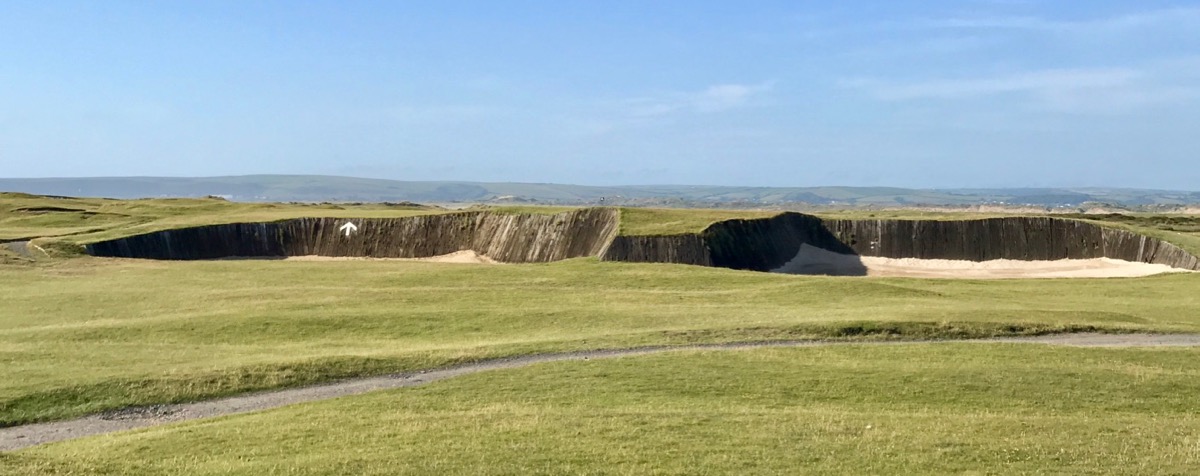 Royal North Devon GC- bunkers off tee: hole 4
Royal North Devon GC- bunkers off tee: hole 4
After golf we headed around the bay to our hotel for the night- The Saunton Sands hotel which overlooks the most astounding beach/sand dunes territory I have seen
XXXXXXXXXXXXXXXXXXXXXXXXX
After another one night stand our first stop for the day was the Saunton Golf Club where we were booked to play the East Course.
Saunton has two courses of championship standard, and while the West Course is shorter, and a bit quirkier, it also offers a stern test of golf.
On this occasion we only had the morning to check out the East Course, as this was the course that was host to more championships, and is regarded the best course (albeit marginally).
We played 8 holes, taking pics and video before the slow pace enforced our decision to walk off.
We did get time to take drone footage, and walked the holes we did not play to take photos.
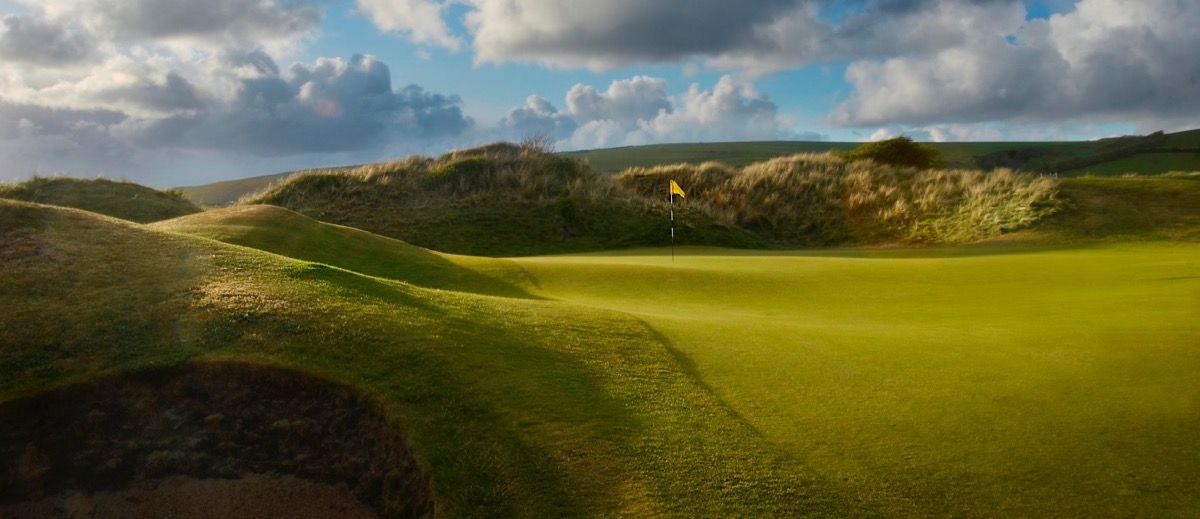 The 9th green of Saunton Golf Clubs East Course
The 9th green of Saunton Golf Clubs East Course
We nipped in for a quick bite of lunch and then we were on the road to Somerset- to the Burnham & Berrow course regarded as the best in Somerset.
We met the manager and as we only had less than 2 hours one of the club directors escorted us around the course giving us directions and some history.
In no time we had a good feel for the quality of the course and the better holes.
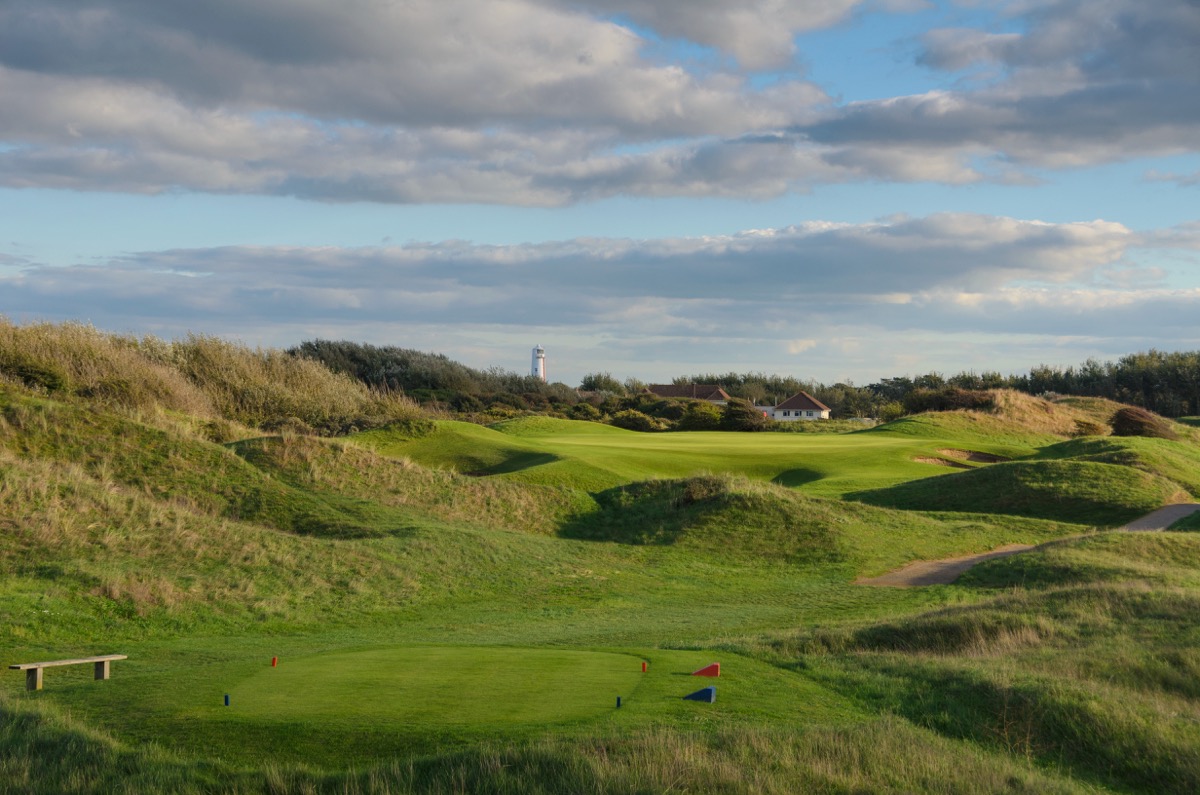 Hole 17 of Burnham & Berrow
Hole 17 of Burnham & Berrow
Harry Colt left his mark here!
Our last effort for the day was to drive to Bristol airport for our quick flight to Dublin airport.
So it was goodbye to Cornwall, Devon & Somerset. We loved The Atlantic Coast for the golf, the people, the history, the walks- and vowed to return...
Peter Wood
The Travelling Golfer
June 2017
